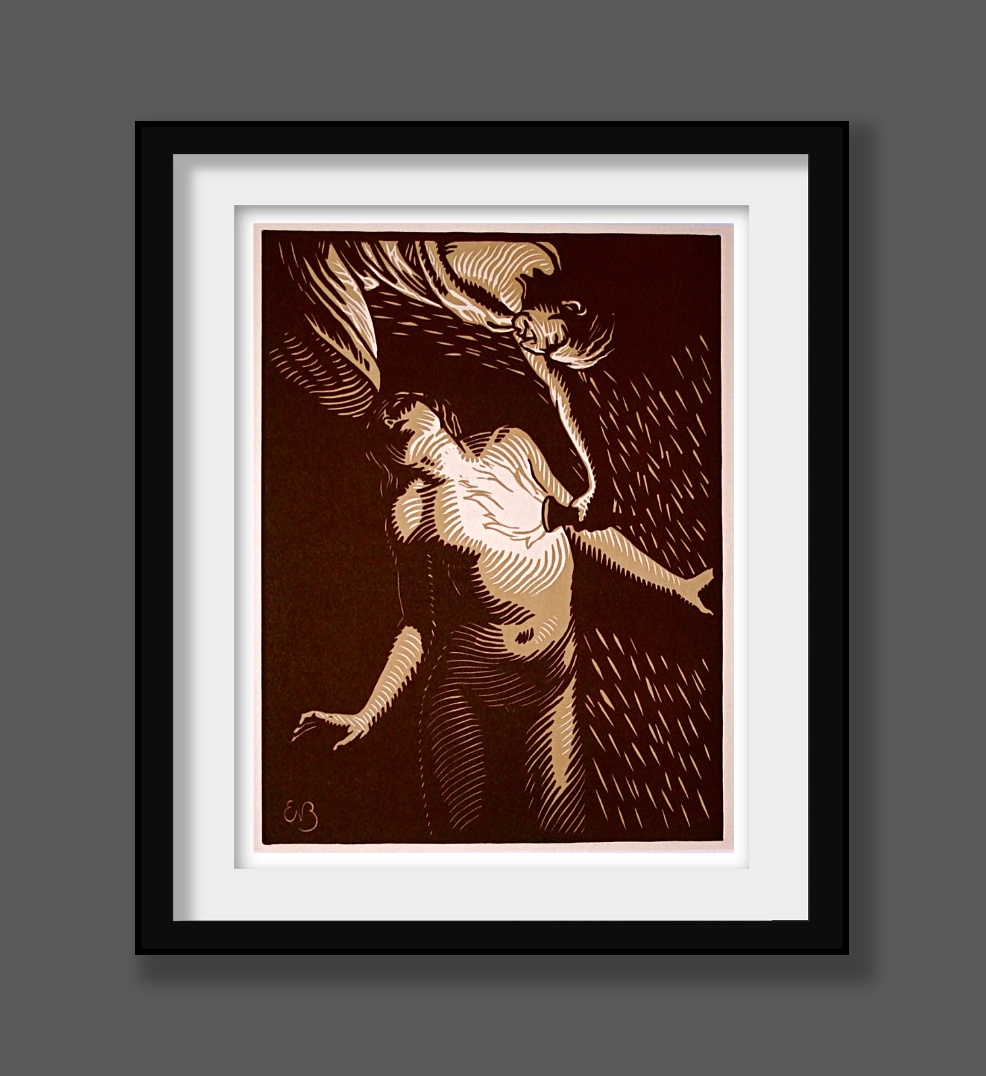

Title: Woodcut book of lesbian nudes By A. Sleff
Shipping: $18.00
Artist: N/A
Period: 20th Century
History: N/A
Origin: Central Europe > France
Condition: Excellent
Item Date: 1946
Item ID: 2147
An image of black and white nudes, with the only red being on the cover. This woodcut is made of colored paper and is not framed. It is in very good condition and can be hard to find, making it a valuable addition for any woodblock print collector. I have several of these for sale as part of my Private collection. This colored illustration woodcut is from a book portfolio called "Femmes Damnees", which is a French book of woodblock prints produced by A. Sleff in April 1946. Each page is framed and features a woodblock poem that corresponds to the image on the back of the print. This particular copy is one of only 51 copies, all of which are printed on velin paper. The title "Femmes Damnees" translates to "fatal women" in English. While these images evoke the turn-of-the-century fixation with the femme fatale, the poetry and images in this book suggest a dominant lesbian theme.
Woodblock printing has a long and rich history in Europe, dating back to the early days of printmaking. It originated in China during the Tang Dynasty (618-907) and spread to Europe through trade and cultural exchanges. Woodblock printing involves carving an image onto a block of wood, inking the block, and then pressing it onto paper or fabric to create a print. In Europe, woodblock printing was initially used for religious and decorative purposes, with early examples found in religious texts, playing cards, and textiles. However, it was during the Renaissance period (14th to 17th centuries) that woodblock printing gained widespread popularity as a means of reproducing images for both artistic and commercial purposes. One of the most famous European artists known for his woodblock prints is Albrecht Dürer (1471-1528), a German painter and printmaker. Dürer's woodcuts were highly detailed and intricate, often depicting religious and mythological themes. His work had a significant impact on the development of printmaking in Europe, elevating it as an artistic medium. During the 17th and 18th centuries, woodblock printing became a common method for producing illustrations in books, particularly in popular genres such as natural history, travel, and literature. In England, artists such as Thomas Bewick (1753-1828) gained recognition for his wood engravings, which were known for their fine detail and realistic depiction of nature. In the 19th century, woodblock printing saw a resurgence in Europe as a means of artistic expression. The Arts and Crafts movement, which emerged in Britain, emphasized the importance of craftsmanship and the use of traditional techniques, including woodblock printing. Artists such as William Morris (1834-1896) and Walter Crane (1845-1915) incorporated woodblock printing into their designs for textiles, wallpaper, and books. Woodblock printing continued to evolve in Europe in the 20th century, with artists experimenting with different styles, techniques, and subject matters. The modernist movement, with artists such as Pablo Picasso (1881-1973) and Henri Matisse (1869-1954), also explored woodblock printing as a medium for artistic expression. Today, woodblock printing remains a vibrant and versatile artistic medium in Europe and around the world. Contemporary artists continue to push the boundaries of woodblock printing, combining traditional techniques with modern aesthetics, and exploring new ways to create unique and expressive prints.
Link: http://en.wikipedia.org/wiki/Woodblock_printing
Woodblock printing is a technique for printing text, images or patterns used widely throughout East Asia and originating in China in antiquity as a method of printing on textiles and later paper. As a method of printing on cloth, the earliest surviving examples from China date to before 220, and from Egypt to the 4th century. Ukiyo-e is the best known type of Japanese woodblock art print.Most European uses of the technique on paper are covered by the art term woodcut, except for the block-books produced mainly in the fifteenth century.